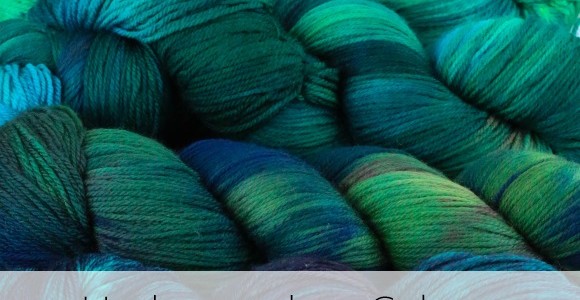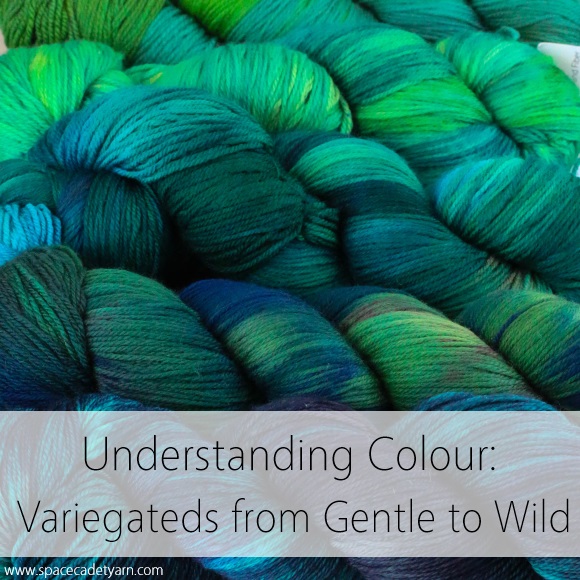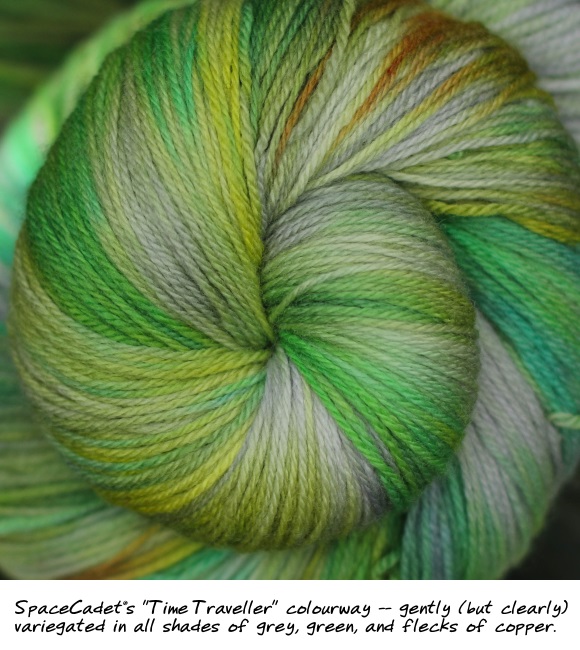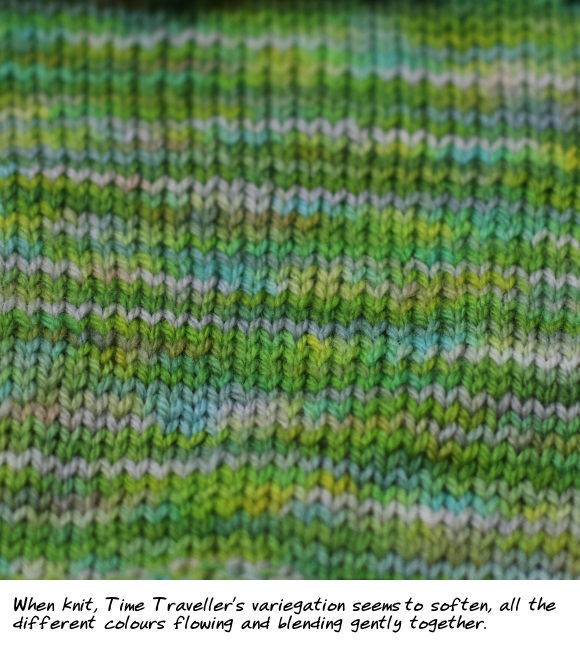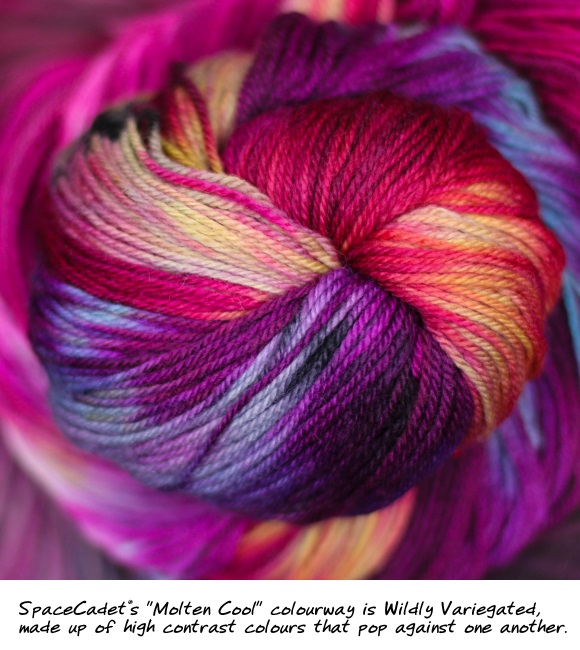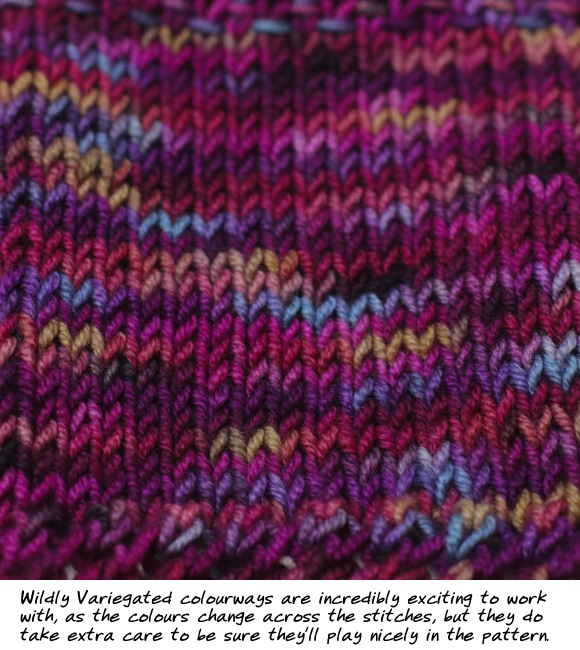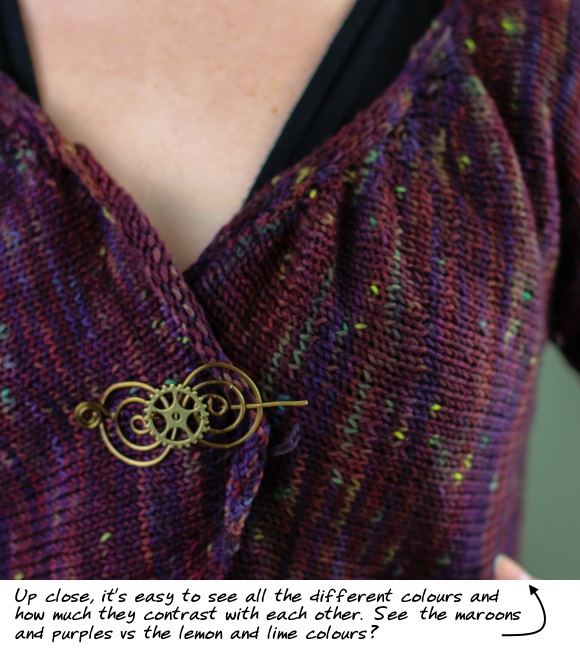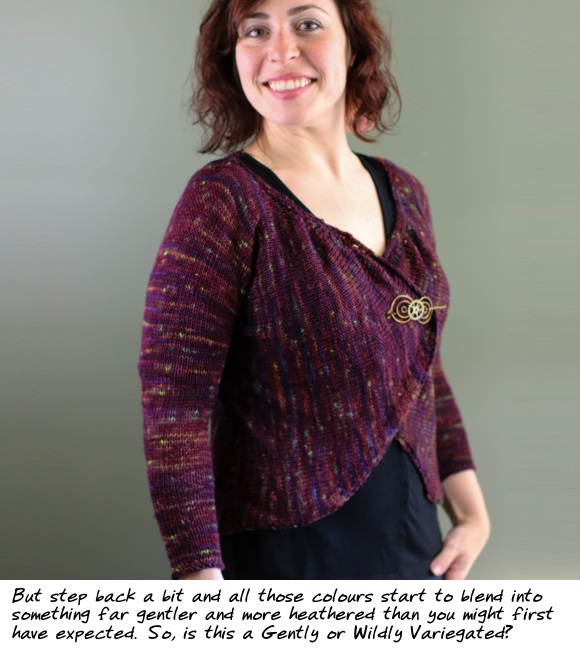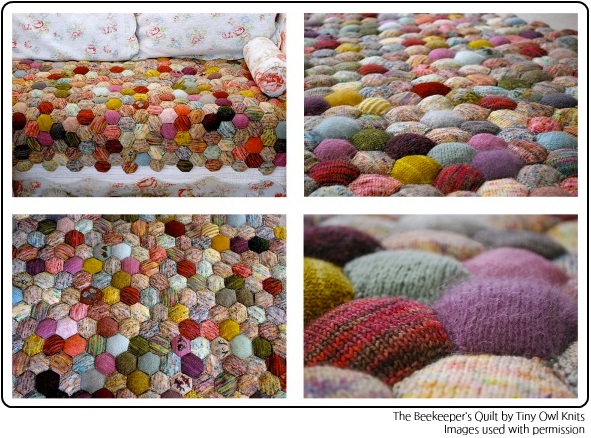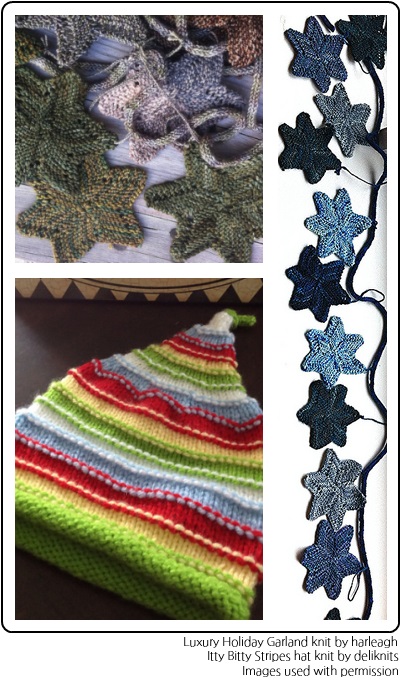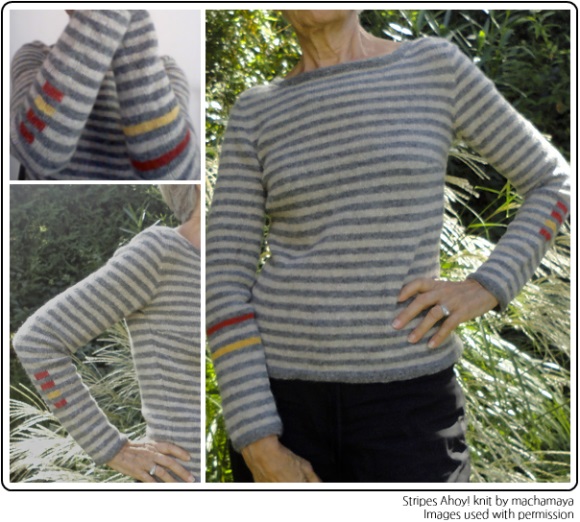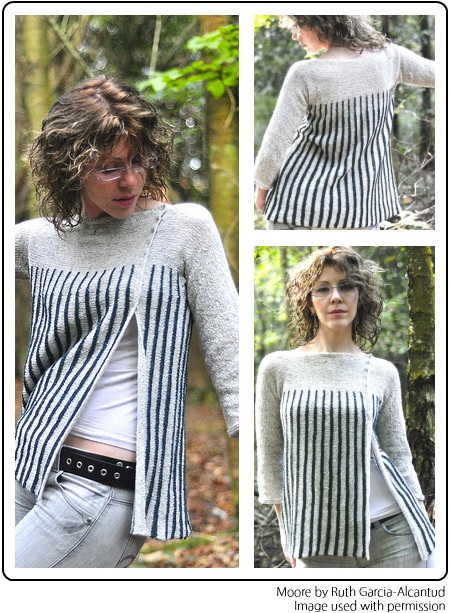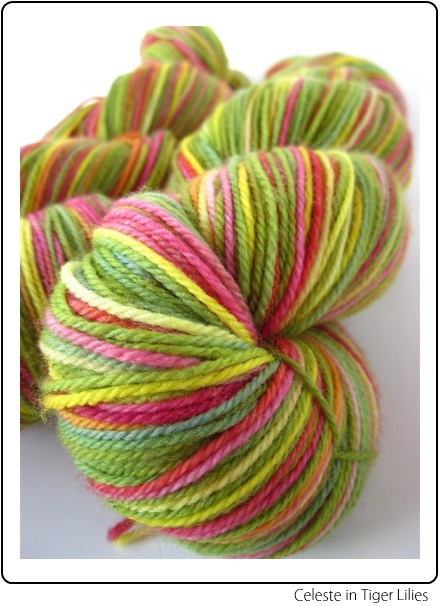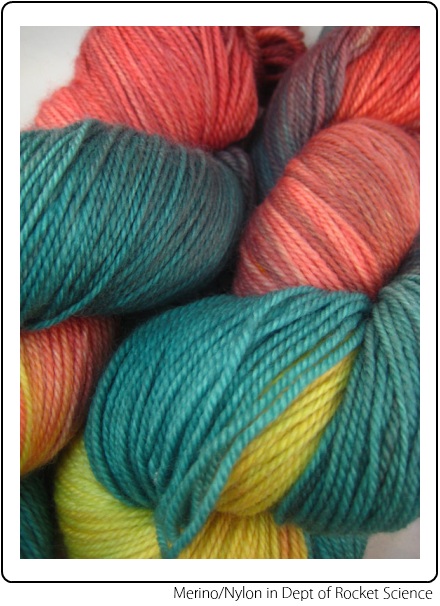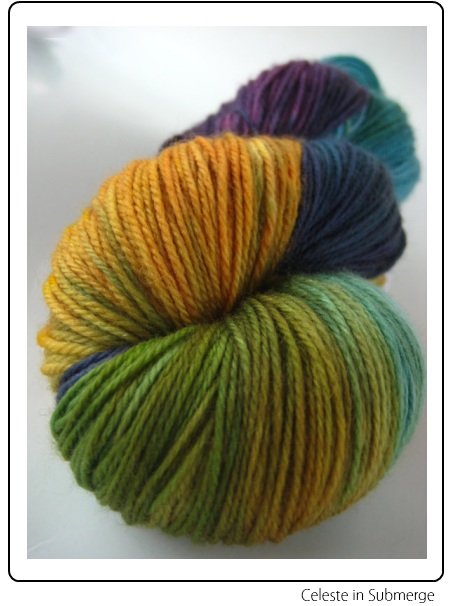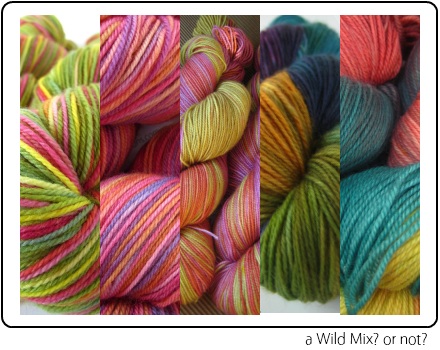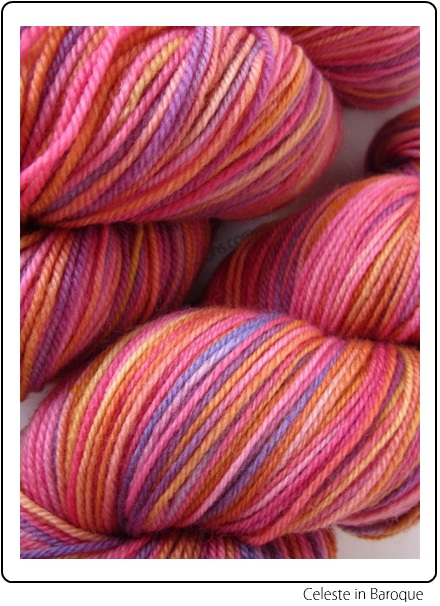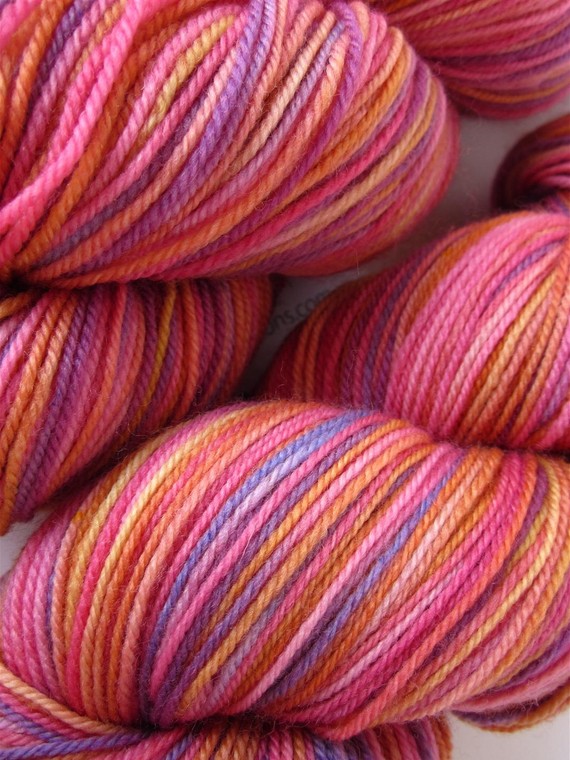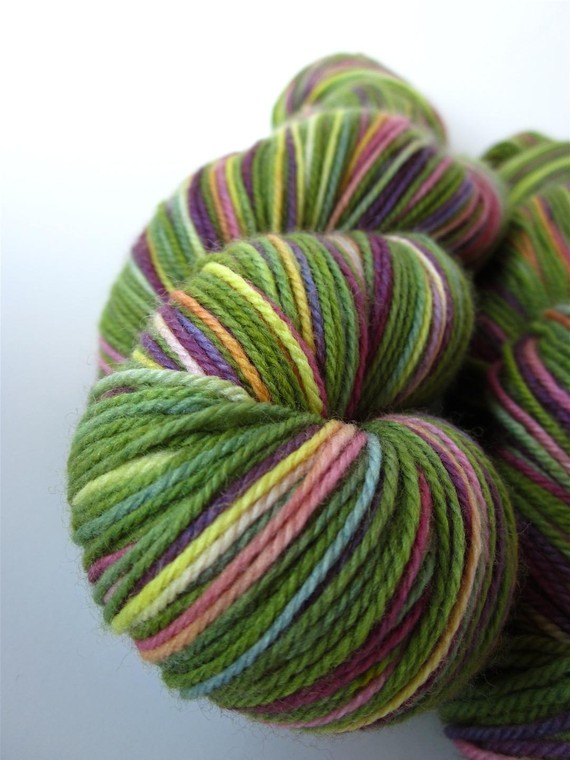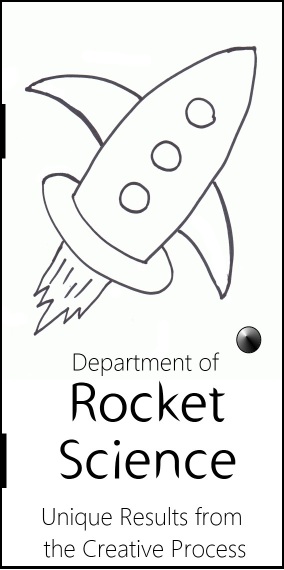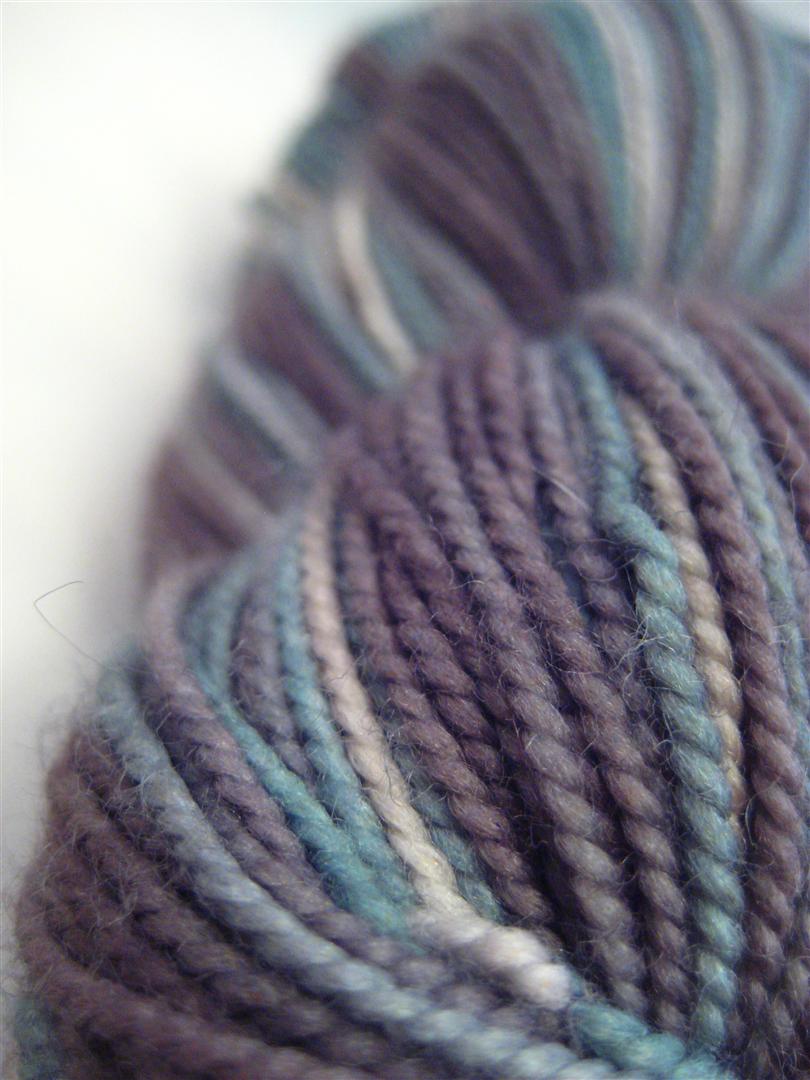Last week we talked about the different meanings of the colour terms “solid”, “semi-solid”, and “tonal” — all of which refer to yarn dyed in a single hue. But so often the yarns that really send our pulses racing are the multi-hued colourways — layer upon layer of fabulous colour, almost glowing in our hands as we turn them over and over to catch every last shade. These are variegated colourways and, beautiful as they are, they can be intimidating. But there are different types of variegateds and, once you realise the differences, they become much more approachable.
So first, let’s define what we’re talking about. The straight-up definition of a variegated colourway is any colourway that contains more than one hue (colour). So, going back to last week’s post, if a yarn contains light kelly green and mid-kelly green and dark kelly green, it’s not variegated, it’s tonal because the hue of all the greens is the same. But if a yarn contains a yellow-green and a blue-green as well as the kelly green, now it’s got mutiple hues (colours) and that makes it variegated. To put it very simply: in a variegated colourway, the colour varies.
But there’s far more to “variegated” than just that simple definition. Here at SpaceCadet, we tend to divide our variegateds into two categories: Gently Variegated and Wildly Variegated, and the good news is that they are exactly what they sound like.
Gently Variegateds: The Easy-to-Love Variegateds
Gently Variegated colourways are low contrast — their colours blend and flow into one another. Think of our colourway Time Traveller, all shades of green and gray and gentle flecks of copper. There are actually a whole bunch of colours in there — it’s definitely variegated — but none of them are jarring against each other. In fact, although the yarn looks clearly variegated in the skein, when you knit it up, it’s quite startling just how much the different colours begin to flow into each other. In fact, if you back up a few feet, it all begins to blend together as if it were hardly variegated at all.
Wildly Variegateds: The Bad Boy Colourways You Can’t Help Falling For
Wildly Variegated colourways are high contrast, containing hues that pop and sizzle against one another. These are colours that jump around on the colour wheel, like the rust-and-blue combination in Windswept or the maroon-blue-yellow of Molten Cool. They’re incredibly exciting to knit or crochet with, the colours morphing and changing across your stitches. But because they are high contrast, they can be high maintenance as well — there’s a push-pull element to the colours that means that, unlike Gently Variegateds, they may not play nicely together in plainer stitches.
So, so far, so simple. Variegateds are colourways that contain more than one hue (colour). Gently Variegateds are low contrast and Wildly Variegateds are high contrast. Easy, right? Yep, so let me complicated it just a bit.
When Gentles Go Wild (And Vice Versa)
There’s another element to what makes us perceive a variegated yarn as either Gentle or Wild, and this one defies the neat definitions we discussed above. That element is the specific layouts of the colour repeats. Or put more simply: how quickly and often the colour changes.
A yarn with long colour repeats will tend to look more variegated regardless of whether the hues are high or low contrast, simply because those long stretches allow the colours to separate in your knitting or crochet. Depending on your project, they may stripe (or semi-stripe), pool, argyle, or create irregular flashes. And when there are these sorts of large, distinct areas of a single hue which abut other distinct areas in a different hue, our eyes more easily perceive those colour changes and the colourway appears to have higher contrast (even when the two hues are similar).
And the reverse is true as well: when a yarn has many short colour repeats, it tends to look less variegated, regardless of whether its hues are high or low contrast. Short, quick colour repeats create tiny pops of colour that sit right next each other in your knitting without such distinct edges. Because of this, our eyes perceive even a wildly variegated colourway almost as a single, multi-hued colour (as if such a thing were possible) and the whole thing appears to be lower contrast. Think of a heathered yarn, which may have anything from grays and browns to blues, greens, yellows, and perhaps even hot pinks — and yet, because the colour changes are many and often, they all blend together in a way that could almost be described as soft.
Here’s a great example: this is Mythos by Laura Nelkin, which my assistant Jade knit in a one-of-a-kind colourway we created last year. If you look closely, you can see that the colours are actually very high contrast — there are maroons, purple-blues, dusty aqua, lime green, and even yellow. By definition, it’s a Wildly Variegated colourway (and kind of sounds like it should be approaching the dreaded clown barf). But, in reality, the short repeats give only pops of colour instead of stripes or pooling. And the result is a colourway that is Gently Variegated and almost heathered — proof that even high contrast colourways don’t have to be so wild after all.
Now It’s Your Turn…
So now that we’ve gone over the terms, here are two exercises to give you hands-on practice in understand these different types of variegateds:
- First, go to the SpaceCadet colourways page and scroll to the bottom to see our variegated colourways. Mentally note which look Gentle and which look Wild to you, and then compare it what we consider Gentle or Wild by clicking on the buttons at the top (you’ll see them marked “Gently Variegated” or just “Variegated” — I left off the word Wild because I didn’t want to them to sound scary). Remember that although there are clear definitions for both, there are no right or wrong answers — the perception of wild vs gentle is pretty subjective. Even very high contrast colours can look Gentle if they are configured the right way; and low contrast colours can start to look a little Wild if they are allowed to pool, flash, or stripe.
- And then, go and look at your own stash and see what you gravitate to. Do you have a lot of yarns with colours that blend and flow into one another, or that are close on the colour wheel? Or is your stash filled with yarns whose colours that contrast sharply with one another? Open the skeins up to see how long the colour repeats are, and think about how is that going to affect the way the yarn looks when it’s knitted or crocheted. Most importantly, how do you feel about the colourways in your stash? Are you excited to work with them and see how they come out or are you a little intimidated by them? Ultimately, whether Wild or Gentle, low contrast or high, the how we feel about the end result is what really matters. But we’ll get better results from our yarn — and our yarn shopping — if we really understand what draws us to the yarns we love.
Next up in this series: a colourway that seemingly defies all these definitions… and what makes it so interesting. I’ll be posting that sometime in the next week or so — don’t miss it!

